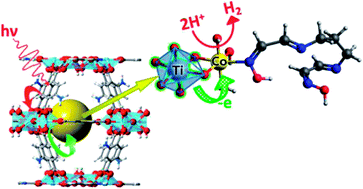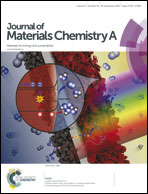Illuminating the nature and behavior of the active center: the key for photocatalytic H2 production in Co@NH2-MIL-125(Ti)†
Abstract
Advanced atomically resolved characterization methods unveil the mechanism of a promising photocatalytic Co@MOF(Ti) system for H2 production. The combination of X-ray absorption spectroscopy (XAS) and electron paramagnetic resonance (EPR) experiments allows for the characterization of atomic and electronic rearrangements in the photoinduced species. This information provides the basis for the optimization of photocatalyst design.



 Please wait while we load your content...
Please wait while we load your content...